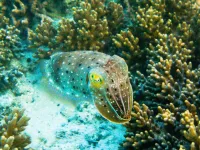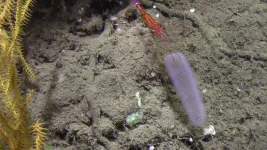(Press-News.org) The majority of top-rated fertility apps collect and even share intimate data without the users' knowledge or permission, a collaborative study by Newcastle University and Umea University has found.
Researchers are now calling for a tightening of the categorisation of these apps by platforms to protect women from intimate and deeply personal information being exploited and sold.
For hundreds of millions of women fertility tracking applications offer an affordable solution when trying to conceive or manage their pregnancy. But as this technology grows in popularity, experts have revealed that most of the top-rated fertility apps collect and share sensitive private information without users' consent.
Dr Maryam Mehrnezhad, of Newcastle University's School of Computing and Dr Teresa Almeida, from the Department of Informatics, Umeå University, Sweden, explored the privacy risks that can originate from the mismanagement, misuse, and misappropriation of intimate data, which are entwined in individual life events and in public health issues such as abortion, infertility, and pregnancy.
Dr Mehrnezhad and Dr Almeida analysed the privacy notices and tracking practices of 30 apps, available at no cost and dedicated to potential fertility. The apps were selected from the top search results in the Google Play Store and let a user regularly input personal and intimate information, including temperature, mood, sexual activity, orgasm and medical records.
Once the apps were downloaded, the researchers analysed GDPR requirements, privacy notices and tracking practices. They found out that the majority of these apps are not complying with the GDPR in terms of their privacy notices and tracking practices. The study also shows that these apps activate 3.8 trackers on average right after they are installed and opened by the user, even if the user does not engage with the privacy notice.
Presenting their findings at the CHI 2021 Conference, taking place on May 8-13, Dr Mehrnezhad and Dr Almeida warn that the approach of these apps to user privacy has implications for reproductive health, and rights.
Dr Mehrnezhad said: "Users of these apps are normally women who are considered marginalised user groups and the data concerning these groups is personal, more sensitive, and identified by GDPR legislation as 'special category data' requiring extra protection."
Dr Almeida added: "Data are kept in such a vulnerable condition, one in which a default setting allows not only for monetizing data but also to sustain systems of interpersonal violence or harm, such as in cases of pregnancy loss or abortion, demands a more careful approach to how technology is designed and developed.
"While digital health technologies help people better manage their reproductive lives, risks increase when data given voluntarily are not justly protected and data subjects see their reproductive rights challenged to the point of e.g. personal safety."
The study shows that majority of these fertility apps are classified as 'Health & Fitness', a few as 'Medical', and one as 'Communication'. The authors argue that miscategorising an unsecure app which contains medical records as 'Health & Fitness' would enable the developers to avoid the potential consequences, for example, of remaining in the app market without drawing significant attention to it. This means that fertility app data could continue to be sold to third parties for a variety of unauthorised uses, such as advertising and app development.
The team is currently looking into the security, privacy, bias and trust in IoT devices in Femtech. In light of their research, these researchers are calling for more adequate, lawful, and ethical processes when dealing with this data to ensure women get protection for the intimate information that is being collected by such technologies. They advise to seek to improve the understanding of how marginalised user groups can help to shape the design and use of cybersecurity and privacy of such technologies.
INFORMATION:
Reference
Maryam Mehrnezhad and Teresa Almeida. 2021. Caring for Intimate Data in Fertility Technologies. In CHI Conference on Human Factors in Computing Systems (CHI '21), May 8-13, 2021, Yokohama, Japan. ACM, New York, NY, USA 11 Pages. https://doi.org/10.1145/3411764.3445132
T-cell acute lymphoblastic leukemia (T-ALL) is a very aggressive type of blood cancer. It is relatively rare but still draws a lot of attention as it mostly develops in children under the age of 20. The standard treatment for T-ALL involves heavy chemotherapy procedures, which result in favorable outcomes with an overall survival of 75% after 5 years.
However, some patients do not respond to this treatment, or they only respond for a short period, after which the disease grows back. These patients therefore need alternative therapies.
Researchers from the Faculty of Health and Medical Sciences, University of Copenhagen, have now identified a combination treatment, which could potentially benefit patients ...
University of Bristol research into octopus vision has led to a quick and easy test that helps optometrists identify people who are at greater risk of macular degeneration, the leading cause of incurable sight loss.
The basis for this breakthrough was published in the latest issue of the Journal of Experimental Biology and describes new technology developed by lead researcher, Professor Shelby Temple, to measure how well octopus- which are colour-blind - could detect polarized light, an aspect of light that humans can't readily see. Using this novel technology, the research team showed that octopus have the most sensitive polarization vision system of any animal tested to date. Subsequent research ...
When COVID-19 patients began filling up ICUs throughout the country in 2020, health care providers faced difficult decisions. Health care workers had to decide which patients were most likely to recover with care and which were not so resources could be prioritized.
But a new paper from the University of Georgia suggests that unconscious biases in the health care system may have influenced how individuals with intellectual disabilities were categorized in emergency triage protocols.
The state-level protocols, while crucial for prioritizing care during disasters, frequently ...
(Boston)--If you come from a family where people routinely live well into old age, you will likely have better cognitive function (the ability to clearly think, learn and remember) than peers from families where people die younger. Researchers affiliated with the Long Life Family Study (LLFS) recently broadened that finding in a paper published in END ...
Brain implants are used to treat neurological dysfunction, and their use for enhancing cognitive abilities is a promising field of research. Implants can be used to monitor brain activity or stimulate parts of the brain using electrical pulses. In epilepsy, for example, brain implants can determine where in the brain seizures are happening.
Over time, implants trigger a foreign body response, creating inflammation and scar tissue around the implant that reduces their effectiveness.
The problem is that traditional implants are much more rigid than brain tissue, which has a softness comparable to pudding. Stress between the implant and ...
A new auroral phenomenon discovered by Finnish researchers a year ago is probably caused by areas of increased oxygen atom density occurring in an atmospheric wave channel. The speculative explanation offered by the researchers gained support from a new study.
Observations made by University of Helsinki researchers increased the validity of a speculative mechanism according to which a type of aurora borealis named 'dunes' is born. In the new study, photographs of the phenomenon taken by an international group of hobbyists in Finland, Norway and Scotland were compared to concurrent satellite data.
The rare type of aurora borealis was seen in the sky on 20 January 2016 and recorded in photos taken by ...
This overlay shows radio (orange) and infrared images of a giant molecular cloud called W49A, where new stars are being formed. A team of astronomers led by Chris DePree of Agnes Scott College used the National Science Foundation's Karl G. Jansky Very Large Array (VLA) to make new, high-resolution radio images of this cluster of still-forming, massive stars. W49A, 36,000 light-years from Earth, has been studied for many decades, and the new radio images revealed some tantalizing changes that have occurred since an earlier set of VLA observations in 1994 and 1995.
The ...
Scientists have developed a new "key-hole surgery" technique to extract metals from the earth - which could revolutionise the future of metal mining
A team of international researchers, including Dr Rich Crane from the Camborne School of Mines, University of Exeter, have developed a new method to extract metals, such as copper, from their parent ore body.
The research team have provided a proof of concept for the application of an electric field to control the movement of an acid within a low permeability copper-bearing ore deposit to selectively dissolve and recover the metal in situ.
This is in contrast to the conventional approach for the mining of such deposits ...
Swansea University scientists have uncovered potentially dangerous chemical pollutants that are released from disposable face masks when submerged in water.
The research reveals high levels of pollutants, including lead, antimony, and copper, within the silicon-based and plastic fibres of common disposable face masks.
The work is supported by the Institute for Innovative Materials, Processing and Numerical Technologies (IMPACT) and the SPECIFIC Innovation & Knowledge Centre
Project lead Dr Sarper Sarp of Swansea University College of Engineering said:
"All of us need to keep wearing masks as they are essential in ending the pandemic. But we also urgently need more research and regulation on mask production, so we can reduce any risks to the environment and ...
Pyrosomes, named after the Greek words for 'fire bodies' due their bright bioluminescence, are pelagic tunicates that spend their entire lives swimming in the open ocean. They are made up of many smaller animals, known as zooids, that sit together in a tubular matrix, known as tunic (hence the name pelagic tunicates). Because they live in the open ocean, they generally go unnoticed. In spite of this, increasing research points to their importance in marine environments, as they can form dense blooms that impact food web dynamics and contribute to the movement and transformation of organic carbon.
The study conducted with GEOMAR research vessel POSEIDON in 2018 and 2019 in the vicinity of the Cabo Verde Islands, of which the results have now been published ...




